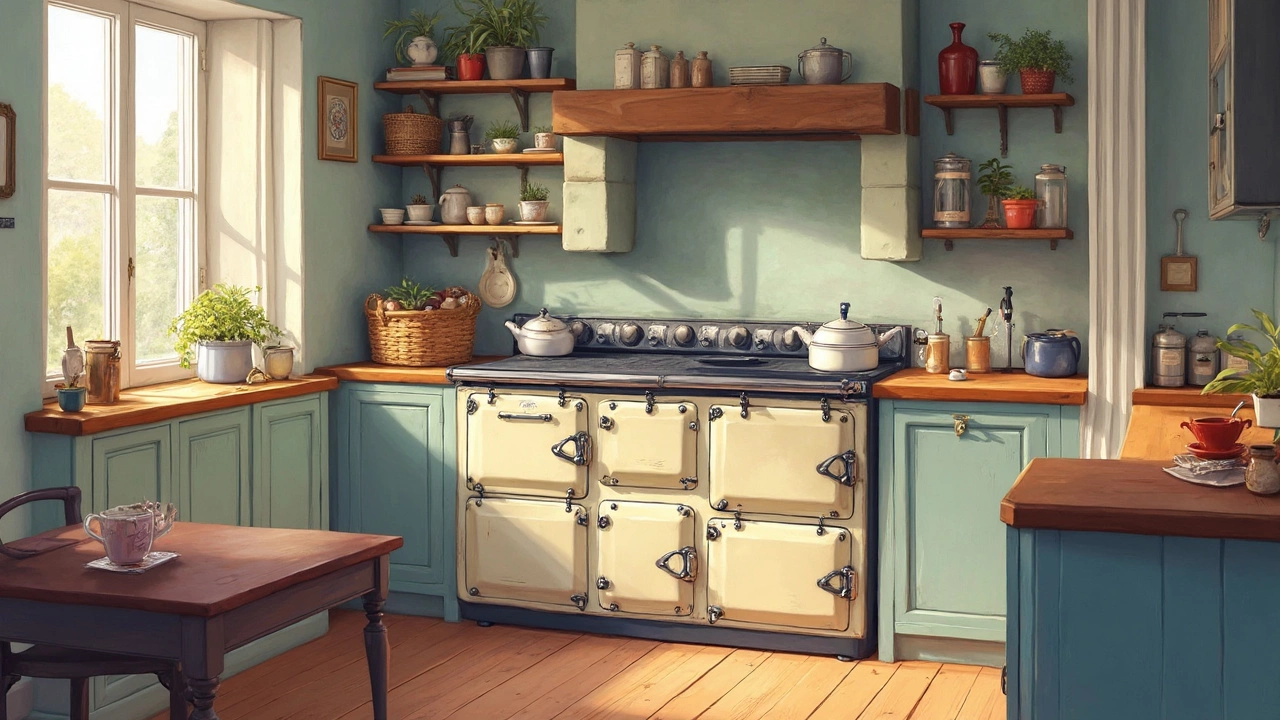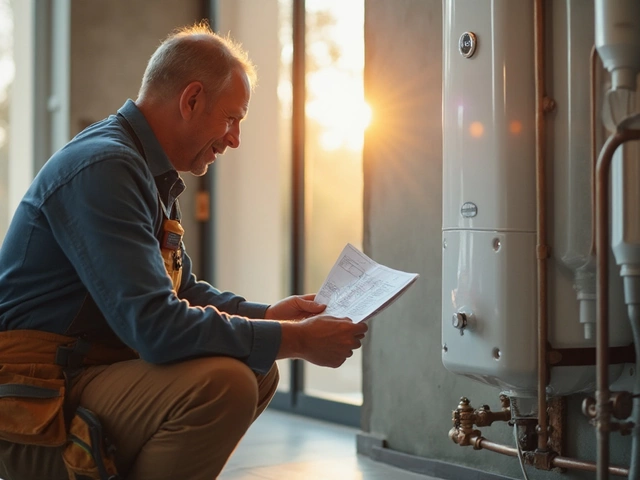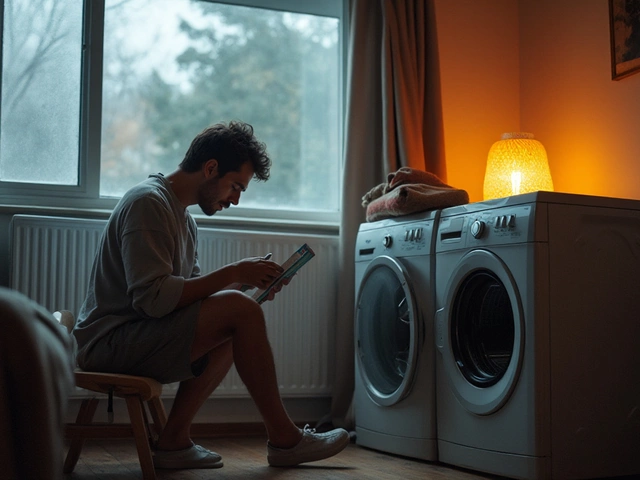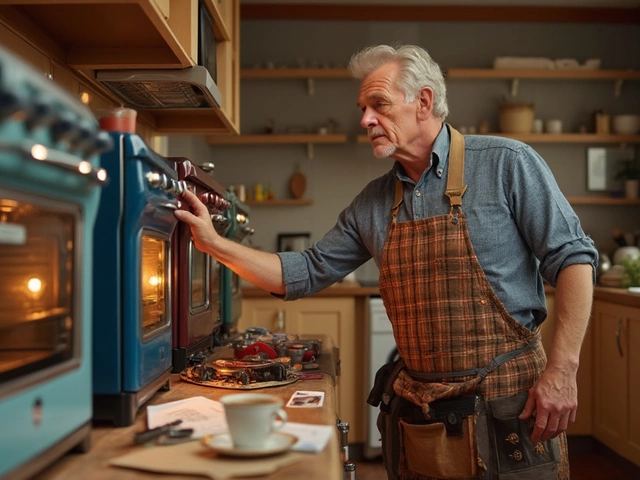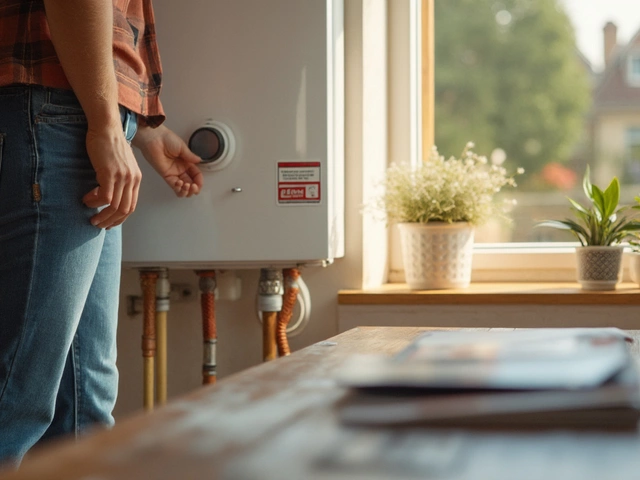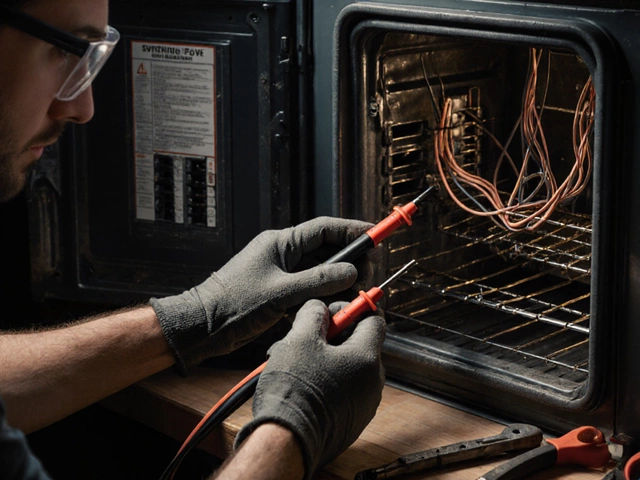You've had your stove for 15 years, and now it's acting up. So, what's the play here? Repair it or toss it for something shiny and new? Well, let's get into what you need to think about before making that call.
First up is cost. Older stoves can be a bit expensive to fix, especially if parts are scarce or pricey. Check what repairs are necessary and gather a few estimates. Comparing these costs to what a new stove would set you back is crucial.
Next, consider how well your stove is performing. Is it heating evenly, or has it become unreliable? Older models can lose their charm over time, becoming less efficient and costing you more in energy bills.
- Evaluating Repair Costs
- Performance and Efficiency Concerns
- Environmental Considerations
- When to Replace
Evaluating Repair Costs
Let's chat about money—specifically, how much it might drain your wallet if you decide to hang on to that old stove. The game plan is to compare repair costs to the price tag on a new model. This section will guide you through the key factors to keep in mind.
Get the Estimates
Start by calling around to local repair shops. Grab a few quotes to get a feel for the general price range. Don't forget that stove repair costs can vary significantly based on the type of issue and the brand of your appliance.
Parts Availability
Age matters here. For a 15-year-old stove, parts might be hard to find, and that scarcity can hike up the price. Double-check if the components require special ordering, as this might influence your decision.
The Repair vs. Replace Formula
A simple formula can help: if the repair costs more than 50% of the price of a new stove, it might be time to say goodbye. This is known as the 50% rule, a handy guideline for budget-conscious decisions.
Warranty Considerations
Remember, most appliances come with a warranty, but after 15 years, yours is probably long expired. Lack of warranty means any mishaps during repairs could cost even more. That’s an extra financial factor to toss into the decision-making pot.
Example Repair Costs
| Repair Type | Average Cost |
|---|---|
| Igniter Replacement | $150-$300 |
| Thermostat Fix | $100-$200 |
| Control Board | $250-$600 |
Evaluating the numbers leads you to the facts: What will stretch your dollar further—fixing that trusty old kitchen companion or upgrading to something new and efficient?
Performance and Efficiency Concerns
When it comes to an old stove, performance is everything. You've probably noticed it takes longer to heat up, or maybe it's not as reliable as it once was. These quirks can be more than just annoying; they can actually hit your wallet hard.
First off, let’s talk about energy use. An outdated stove can be an energy hog. Newer models are designed with energy efficiency in mind, which means they use less power to get the same job done. This efficiency isn't just good for the environment; it's a solid way to cut down on those pesky energy bills. If you find your old stove is causing spikes in your electricity usage, it might be time to reconsider its place in your kitchen.
Another factor is even cooking. Uneven heat distribution is a classic complaint with older stoves. This can result in half-baked cakes and meals that are overcooked on one side and undercooked on the other. If you’re one for family dinners or hosting events, this inconsistency can turn cooking into a frustrating guessing game.
Stove repair can give your appliance a new lease on life, but consider the costs and benefits carefully. When looking at performance, sometimes spending on a new appliance might save you more in the long run, keeping stress and inefficiencies at bay.
| Feature | Old Stove | New Stove |
|---|---|---|
| Energy Efficiency | Low | High |
| Maintenance Cost | High | Moderate |
| Cooking Consistency | Variable | Stable |
So, when do you decide to replace rather than repair? If your stove is consistently draining your wallet or doubling your cooking time, replacement could be the more efficient—and less stressful—choice.
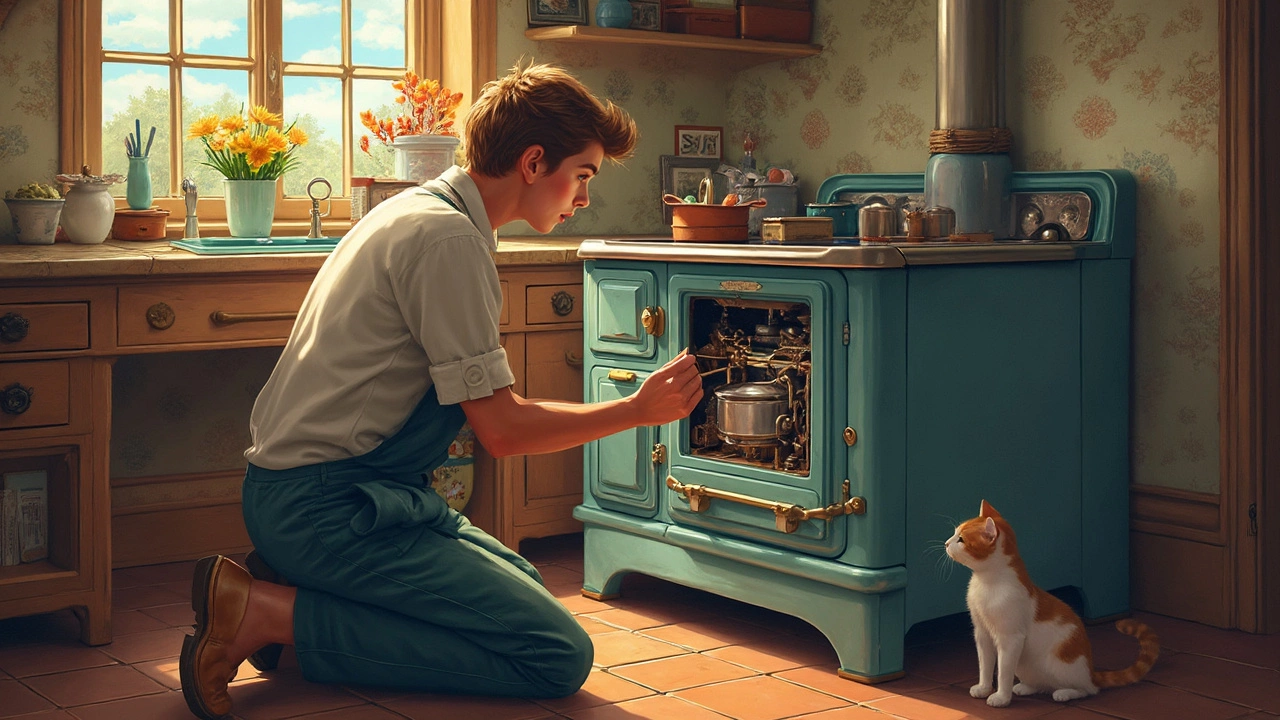
Environmental Considerations
Some folks might not immediately think about the environmental impact when deciding whether to repair or replace their old appliances, but it's worth giving it a thought. Here's why.
Energy Efficiency
Many old appliances, like your 15-year-old stove, were built before energy efficiency was a big selling point. Newer models tend to use significantly less energy, which reduces their carbon footprint. On average, modern stoves can consume up to 40% less energy than their older counterparts.
Waste and Recycling
By extending the life of your current stove through repair, you can help reduce the amount of electronic waste that goes into landfills. Proper disposal and recycling of old appliances can also help retrieve valuable materials, but these processes still put a strain on resources.
Production Impact
Manufacturing a new stove involves using raw materials and energy, which contributes to pollution and resource depletion. If you decide to repair instead of replace, this can have a positive environmental impact by reducing the demand for new production.
Quick Fact
Did you know that around 60% of kitchen appliances end up in landfills each year? Opting for repair can help lower this number significantly.
When to Replace
Alright, sometimes it just makes more sense to replace that old stove rather than wrestling with repairs. Here's when you should strongly consider going new.
Unsafe to Use
If your stove poses any safety hazards—like gas leaks or exposed wires—it's time to replace. Safety isn't something to gamble with, and those issues can quickly turn dangerous.
Constant Repairs
Another sign is if you're calling in the repair guy more often than not. Frequent breakdowns mean your appliance might soon cost more in repairs than it's worth. Imagine your stove as an old car needing constant tune-ups—sometimes it's just better to invest in something reliable.
Outdated Efficiency
New models are usually way more efficient than those old clunkers. If your energy bills are creeping up, it might not just be inflation; your stove could be a big part of the problem. Modern stoves use less energy and cook more evenly, saving you both time and money.
Parts Availability
One practical hurdle is part availability. If you can't find parts for a 15-year-old stove, or if they're ridiculously expensive, it's a strong signal that replacing might be wiser.
Evaluation
Finally, assess how integrated the stove is in your kitchen's look and feel. An outdated stove can be an eyesore in a modern kitchen, and if you're planning to sell your home, a new stove could be a selling point.
In the end, while the love story with your stovetop has been long, sometimes a fresh start is what's needed for the kitchen and your sanity.
